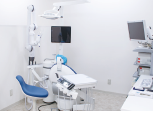
Kansai Medical University Hospital
Kansai Medical University Hospital
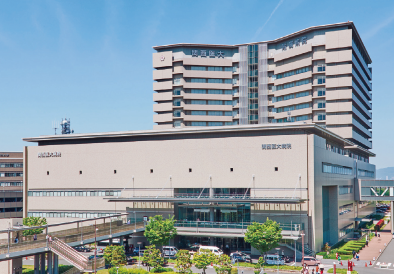
A University Hospital Offering State-of-the-Art Medical Care Safely and Securely
Hospital Overview
KMU Hospital, about a 3-minute walk from Keihan Hirakatashi Station, was newly built in an area of lush greenery by utilizing the waterfront environment of Yodogawa Riverside Park as its background, and started its operation in January 2006. The hospital started its operation as a Advanced Treatment Hospital, and was approved as a General Perinatal Care Center in March 2006, as a Disaster Response Hospital in October 2006, as an Emergency and Critical Care Center in February 2008, as a Cancer Care Hospital in April 2010, and as an Advanced Emergency and Critical Care Center in May 2012.
After that, KMU Hospital was also approved as an Osaka Prefecture Main Hospital for the Treatment of Allergic Diseases , Osaka Prefecture Main Hospital for the Treatment of Intractable Diseases , and Osaka prefecture Core Pediatric Hospital. In April 2018, the hospital was certified by the Japan Council for Quality Health Care, and is fulfilling its duty as the last fortress of medical care for 1.15 million citizens as core hospital in the Kitakawachi secondary catchment area.
In terms of our medical care system, we have been actively promoting the development of centers where multiple departments cooperate to provide medical care. In April 2024, a Diabetes Center and Dementia Prevention Center were established, in addition to the Cancer Treatment Center, the Pediatric Medical Center, the Heart Center, and the Kidney Center.
In terms of facilities, hospital beds were increased by 46 to 797 in March 2024, and operating rooms by 3 to 22 in August 2024. In 2018, a state-of-the-art hybrid operating room was introduced, and a surgery-assisting robot introduced in 2013 was increased to 3 in March 2024. Surgical functions will be enhanced by introducing a knee joint support robot to the Department of Orthopedic Surgery, in addition to a spinal surgery-assisting robot.
To enhance the functions of medical care and improve the environment for outpatients, the concept of a smart hospital is being promoted by introducing AI medical devices and an automatic patient information entry system for electronic medical records.
By 2027, an Annex Building will be completed behind the Main Building. We will fulfill our social responsibility as a university hospital by further enhancing our medical care functions, and improving the environment for treatment.
Improving Minimally Invasive Treatment and Enhancing the Medical Care System
At KMU hospital, we are focusing our efforts on minimally invasive surgery to reduce the patient burden during surgery and treatment, and we are improving facilities and our medical care system. We are also striving to further enhance our medical care system through the establishment of facilities such as the Near InfraRed Photo-Immuno Therapy (NIR-PIT) Center, the Dentistry and Oral Surgery / Oral Care Center, the Diabetes Center and the Dementia Prevention Center.
Advanced and Safe Surgery Tailored to Patients
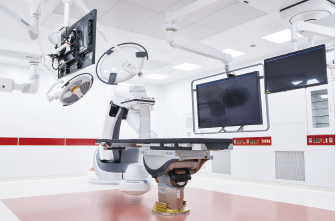
The Near InfraRed Photo-Immuno Therapy (NIR-PIT) Center was Established for New Cancer Treatment
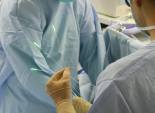
The Near InfraRed Photo-Immuno Therapy (NIR-PIT) Center was established in April 2021 and started to provide NIR-PIT, which is considered the fifth treatment for cancer.
We aim to expand clinical research and indication in cooperation with the Near InfraRed Photo-ImmunoTherapy (NIR-PIT) Research Institute established at the university in April 2022.
Minute and Safe Operation by Utilizing Three Surgery-Assisting Robots
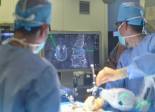
A surgery-assisting robot was introduced in 2013, and increased to 3 robots by adding hinotori in April 2024. In addition to surgery for prostate cancer and renal cancer, the indications have been expanded to esophageal, large intestine, and lung surgery. Furthermore, the Department of Orthopedic Surgery introduced a knee joint support robot, in addition to a spinal surgery-assisting robot. This makes it easier to perform more elaborate surgery precisely.
Providing Centralized Management and Distribution of Surgical Videos

The Surgical Recording System (SRS) was introduced in March 2022 to centrally record and store images of all operating rooms and to distribute electronic charts within the hospital.
The Dentistry and Oral Surgery / Oral Care Center was Established
